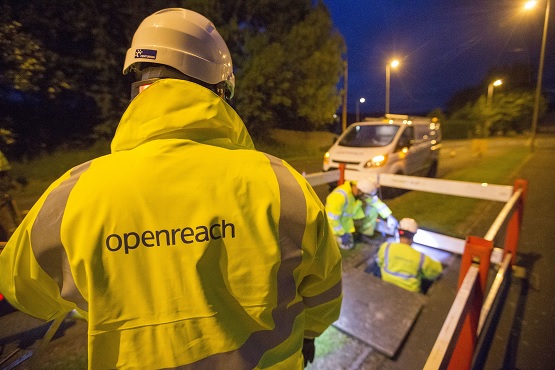It’s scheduled to pass 25 million by the end of 2026, but what about the take-up rate?
Openreach, BT’s semi-detached wholesale access arm, says it passed its 10 millionth premises with FTTH in the village of Kettonin in the East Midlands, in England. It is spending £15 billion to reach its target of passing 25 million premises with FTTH in the UKby the end of 2026.
Arguably take-up is the real kicker – Ofcom’s Connected Nation Report 2022, published last December, estimated that the take-up of services using full fibre (that is, FTTH as opposed to FTTC) at any speed, where fibre is available, is around 25%. Take-up of gigabit-capable networks is higher at around 38%.”
In the new analysis of FTTH take-up in the European Union plus the UK, commissioned by the FTTH Council Europe, it’s interesting how many times the UK gets special mention in the less successful approaches department.
Openreach’s intended update of its wholesale tariffs to service providers has also run into trouble, with Ofcom extending its probe into the likely impact of the changes, after BT’s CEO, Philip Jansen alarmed Ofcom in an over-exuberant interview to the Financial Times.
Virtue signalling
Openreach claims its FTTH infrastructure will improve “the quality of UK public services”, citing its fibre network being available, for instance, to more than 9,000 healthcare-related premises, from dotors’ surgeries, to hospitals and research labs, plus more than 13,500 children’s nurseries, schools and universities.
The network builder and wholesaler also stresses 3 million of the premises passed are in areas of the country that are hard to reach and less densely population, as well as 3 million in areas the Tory Government identified as a priority for its so-called levelling up strategy, announced in November 2020, which appears to have fallen down [subscription needed].
And in more virtue signalling, 409,000 premises are in the top 25 areas designated as being the least socially mobile by the Social Mobility Commission.
Public funding still needed
Even so, it turns out that West London needed to secure a £3.9 million deal to get gigabit broadband to thousands of homes, schools and businesses to parts of the boroughs of Barnet, Brent, Ealing, Harrow and Hillingdon, in partnership with BT. This includes for libraries, social care, community and youth centres, plus connections for up to 15,000 homes and businesses in the vicinity.
The project has been part-funded by the Government’s Getting Building Fund, and allocated by the Mayor of London. Further investment has come from London Councils’ Strategic Investment Pot which is part of its Business Rates Retention Pilot.
BT’s partnership with the West London Alliance (WLA) is trumpeted as being the first deal of its kind in London, and is to provide 1GB internet speeds.
Ed Maughan, BT’s Director for London Private and Public Sector explained: “It will help tackle digital inequality and bring access to state-of-the-art technology to key community hubs, who can often find it difficult to access funding.”



